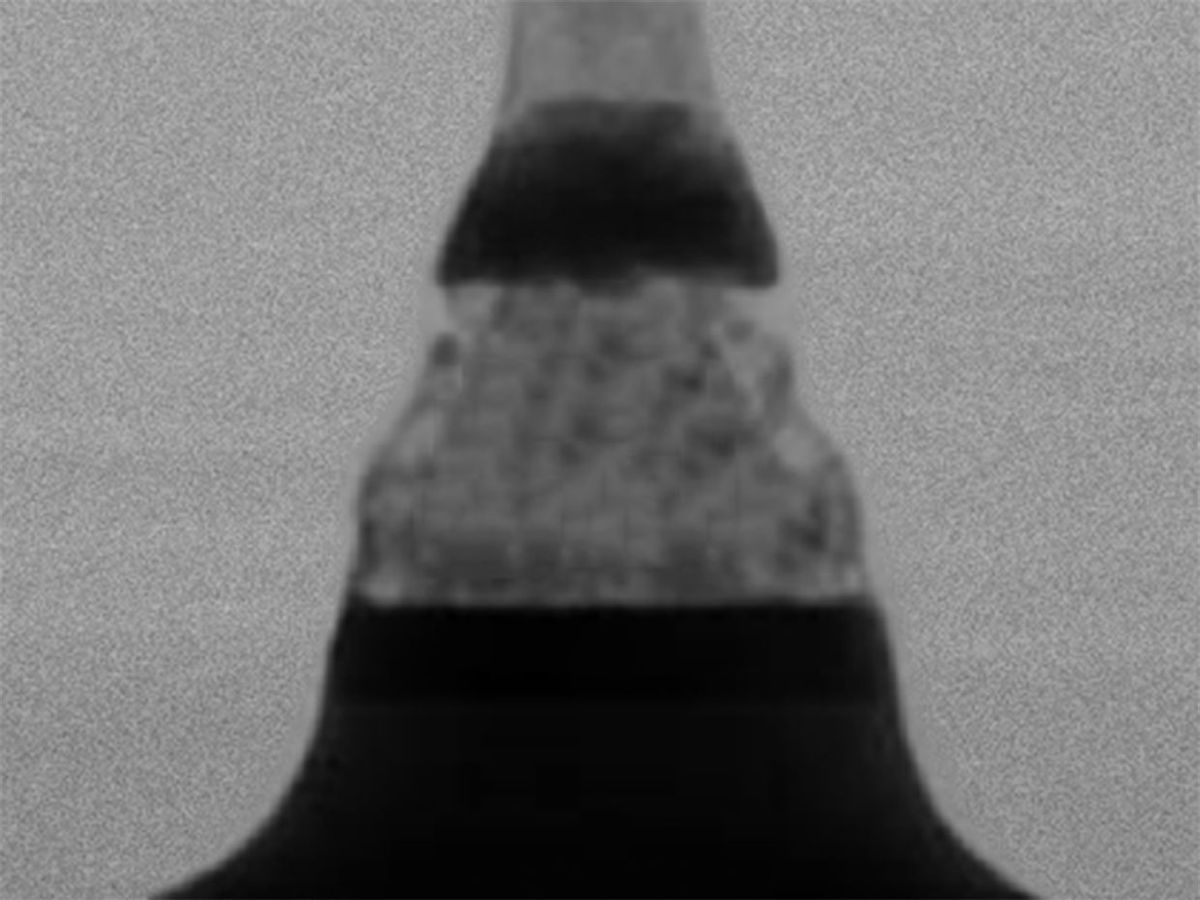Earlier this month, a group of seven Arm Research engineers established a startup, Cerfe Labs, to commercialize an experimental memory technology they had been working on for the past five years with Colorado-based Symetrix. The technology, called correlated electron RAM (CeRAM), could become a nonvolatile replacement for the fast-access embedded SRAM used in processor high-level cache memory today. Besides being able to hold data in the absence of a power supply, which SRAM cannot do, CeRAM is likely to be considerably smaller than SRAM, potentially easing IC area issues as the industry’s ability to keep shrinking transistors reaches its end.
Much of semiconductor physics relies on the assumption that you can treat electrons individually. But more than half a century ago, Neville Francis Mott showed that in certain materials, when electrons are forced together, “[those materials] will do weird things,” explains says Greg Yeric, formerly a Fellow at Arm Research and now Cerfe Labs’ CTO. One of those things is a reversible transition between a metallic state and an insulating state, called a Mott transition. Laboratories around the world have been studying this phenomenon in vanadium oxide and other materials, and HP Labs recently described a neuron-like device that relies on the principle.
“What we think we have through our partnership with Symetrix is an electrically-controlled correlated-electron switch—a material that can switch resistance states,” says Yeric.
The companies are exploring a number of materials, but the one they’ve invested the most in so far is a carbon-doped nickel oxide. The oxide’s native state is non-conducting; that is, there is a gap between the allowable energy states of electrons that are bound to atoms and those that are free to move. But with the carbon doping the material becomes a conductor; the carbon alters the band structure to reduce the gap. This change from what should be an oxide to a metal is due to “correlated” electron-electron interactions, Yeric explains. If enough electrons are extracted from the material, the effect reduces to a critical point and the bands shift apart, making the material an insulator again.
“We have a set of materials that exhibit this transition and, importantly, have a nonvolatile state on either side” of it, says Yeric.
The device itself is just the correlated electron material sandwiched between two electrodes, similar in structure to resistive RAM, phase change RAM, and magnetic RAM but less complex than the latter. And like those three, it is constructed in the metal interconnect layers above the silicon, requiring only one transistor in the silicon layer to access it, as opposed to SRAM’s six. Yeric says the company has made devices that fit with 7-nanometer CMOS processes and they should be scalable in both size and voltage to future cutting edge semiconductor process nodes.
But it’s CeRAM’s speed that could make it a good replacement for SRAM. To date, they’ve made CeRAM with a 2-nanosecond pulse width for writing data, which is on par with what’s needed for a processor’s L3 cache; Yeric says they expect this speed to improve with development.
The carbon-doped nickel oxide material also has properties that are well beyond what today’s nonvolatile memory can do, but they are not as completely proven. For example, Cerfe Labs has shown that the device works at temperatures as low as 1.5 kelvins—well beyond what any nonvolatile memory can do, and in range for a role in quantum computing control circuits. In the other direction, they’ve demonstrated device operation up to 150 °C and showed that it retains its bits at up to 400 °C. But these figures were limited by the equipment the company had available. What’s more, the device’s theory of operation suggests that CeRAM should be naturally resistant to ionizing radiation and magnetic field disturbances.
Symetrix, which also develops ferroelectric RAM, explored correlated electron materials in theoretical studies for a Defense Advanced Research Projects Agency (DARPA) program called FRANC, for Foundations Required for Novel Computing. Symetrix “put together models and were able to predict the materials,” says CEO Eric Hennenhoefer, another Arm veteran.
“System designers are always on the lookout for improved memory, as virtually every system is limited in some way by the memory it can access,” says Yeric. “In [Arm’s] canvassing of possible future technologies, we came across the Symetrix technology. We eventually licensed the technology, based on its (very early and speculative) promise to advance embedded memory speed, density, cost, and power, without tradeoff.”
CerfeLab’s goal isn’t to manufacture CeRAM, but to develop the technology to the point that a large-scale manufacturer will want to take over development, he says. A new memory technology’s journey from discovery to commercialization typically takes eight or nine years at least. CeRAM is about half way there, he estimates.
Among the questions still to be answered involves the memory’s endurance—how many times it can switch before it begins to fail. In theory, there’s no element of the CeRAM device that would wear-out. But it would be naïve to think there won’t be problems in the real world. “There are always extrinsic things that wind up limiting endurance,” Yeric says.
This post was corrected on 20 October to clarify the operation of the device.
Samuel K. Moore is the senior editor at IEEE Spectrum in charge of semiconductors coverage. An IEEE member, he has a bachelor's degree in biomedical engineering from Brown University and a master's degree in journalism from New York University.



